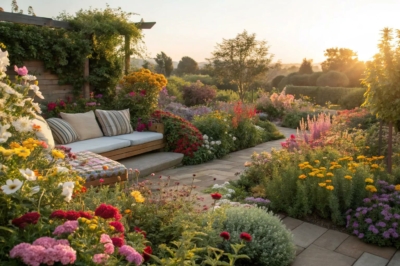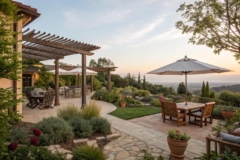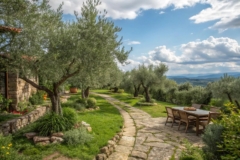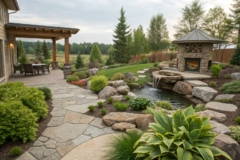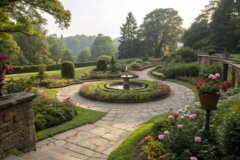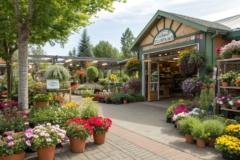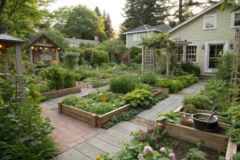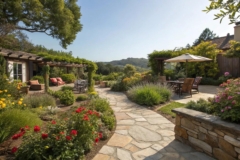1. Defined Borders and Edges

Using stone or plants to create defined borders and edges adds structure and neatness. I find it gives my garden a polished look.
A few suggestions:
- Natural Stone Edging: Enhance your garden’s elegance and structure with durable and timeless natural stone edging.
- Decorative Garden Fence: Define your garden’s borders with a stylish decorative fence for a neat and organized look.
- Boxwood Shrubs: Create lush, green borders with easy-to-maintain boxwood shrubs for that polished garden finish.
2. Colorful Plantings
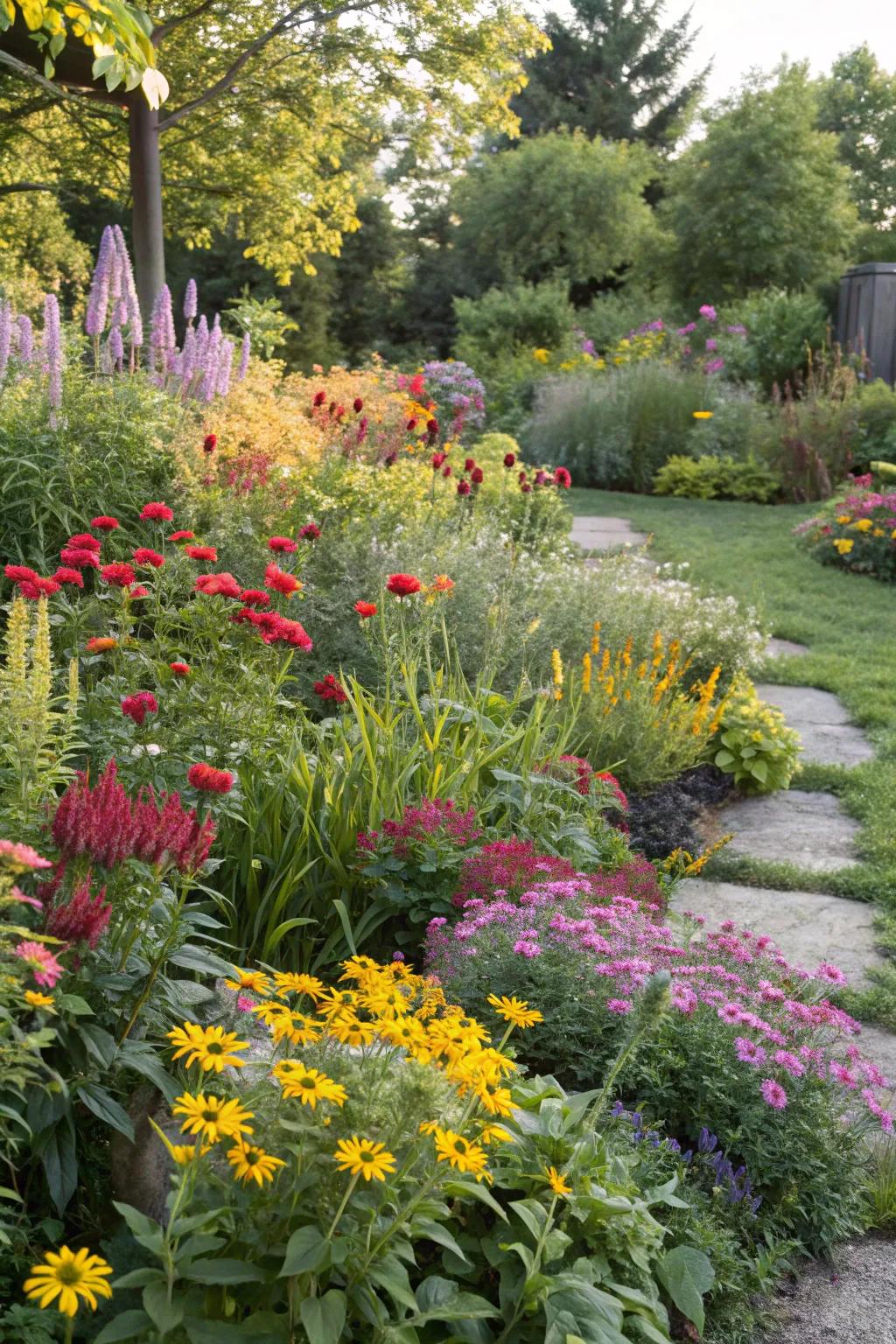
In my own west-facing garden, I’ve found that colorful plantings steal the show. Mixing perennials with annuals adds a burst of color that thrives under the afternoon sun.
Useful items to consider:
- Mixed Perennial Flower Seed Packets: Transform your garden with vibrant blooms perfect for sunny, west-facing spaces. Easy to sow!
- Garden Soil for Flowering Plants: Enhance your plants’ growth with nutrient-rich soil designed for colorful and healthy blooms.
- Solar-Powered Garden Lights: Highlight your garden’s colors day and night with eco-friendly solar-powered lights.
3. Rustic Elements

Adding rustic elements like wooden structures or stone walls gives my garden character. These features blend beautifully with the natural surroundings.
A few helpful options:
- Wooden Garden Arbor: Install a wooden arbor to create a charming entrance and enhance the rustic appeal of your garden.
- Natural Stone Wall Kit: Add character with a natural stone wall kit, perfectly blending with your garden’s rustic theme.
- Rustic Wooden Bench: Place a rustic wooden bench to offer a cozy seating area amidst nature’s beauty.
4. Vertical Gardening
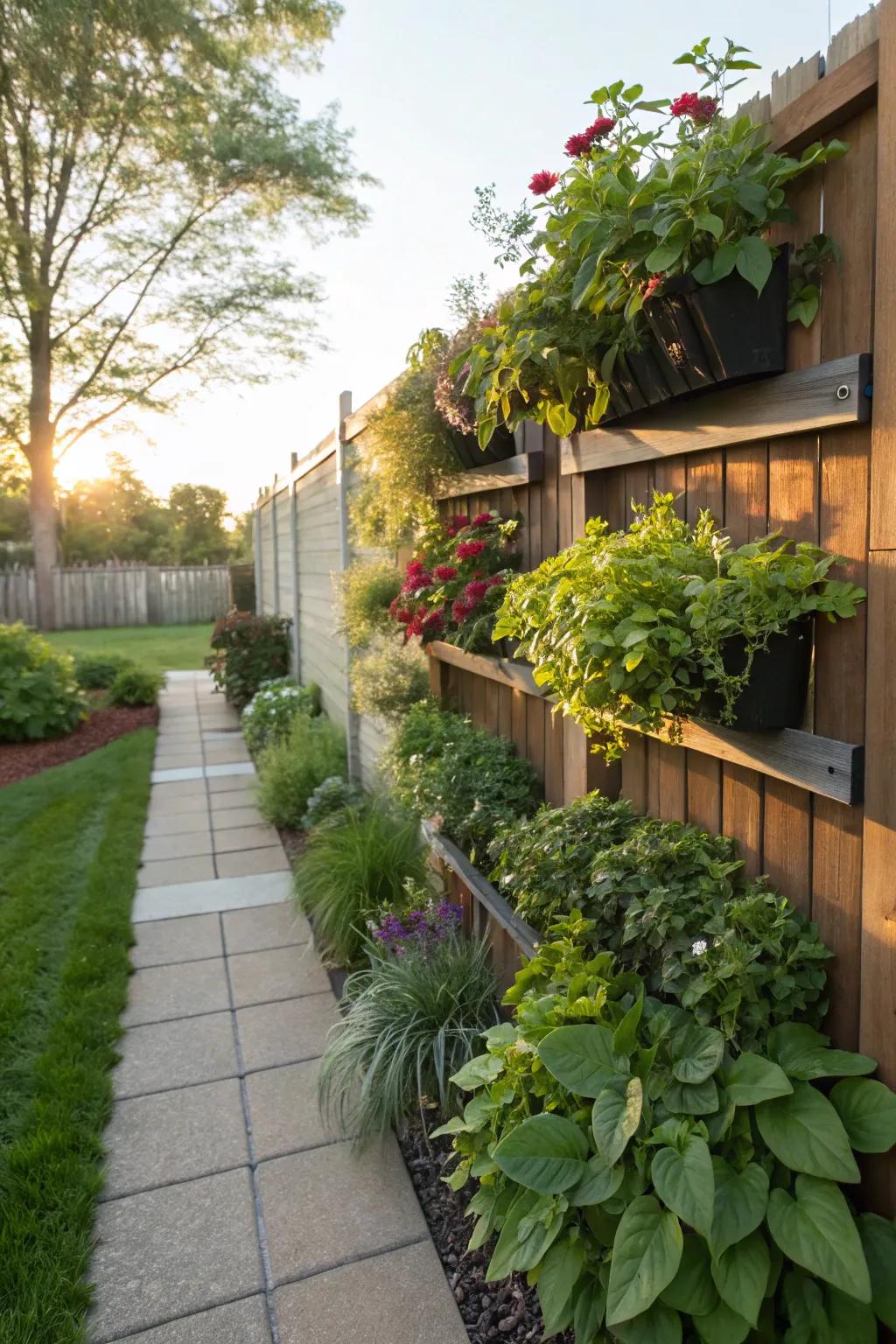
Vertical gardening is my go-to for optimizing space and adding layers to my garden. Wall-mounted planters are a favorite for their style and function.
Consider these options:
- Wall-Mounted Planter Set: Enhance your garden with stylish wall-mounted planters. Perfect for space optimization and layering.
- Hanging Planter Pots: Add dimension to your vertical garden with versatile hanging pots. Ideal for colorful blooms.
- Garden Trellis for Vertical Gardening: Support climbing plants with a sturdy garden trellis. Create a lush, vertical green wall.
5. Inviting Pathways
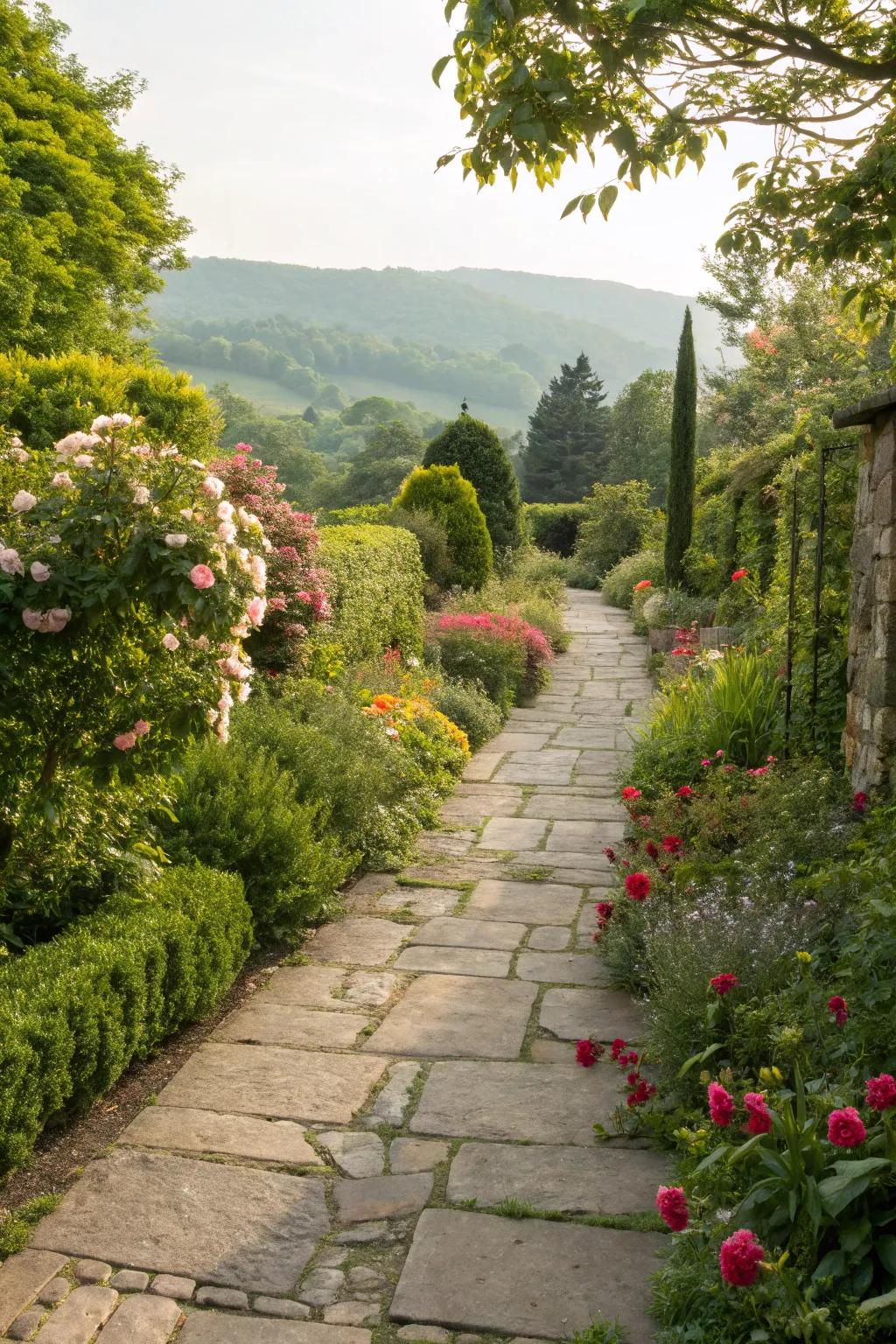
Creating inviting pathways through my garden makes it feel like a little adventure every time I step outside. I love using stone or gravel for that rustic charm.
Possibly handy products:
- Natural Stone Pavers: Enhance your garden with these durable stone pavers, perfect for creating charming, rustic pathways.
- Decorative Garden Gravel: Add texture and style to your garden paths with this versatile decorative gravel.
- Solar Pathway Lights: Illuminate your garden paths with these energy-efficient solar lights for a magical evening ambiance.
6. Sunlight Management
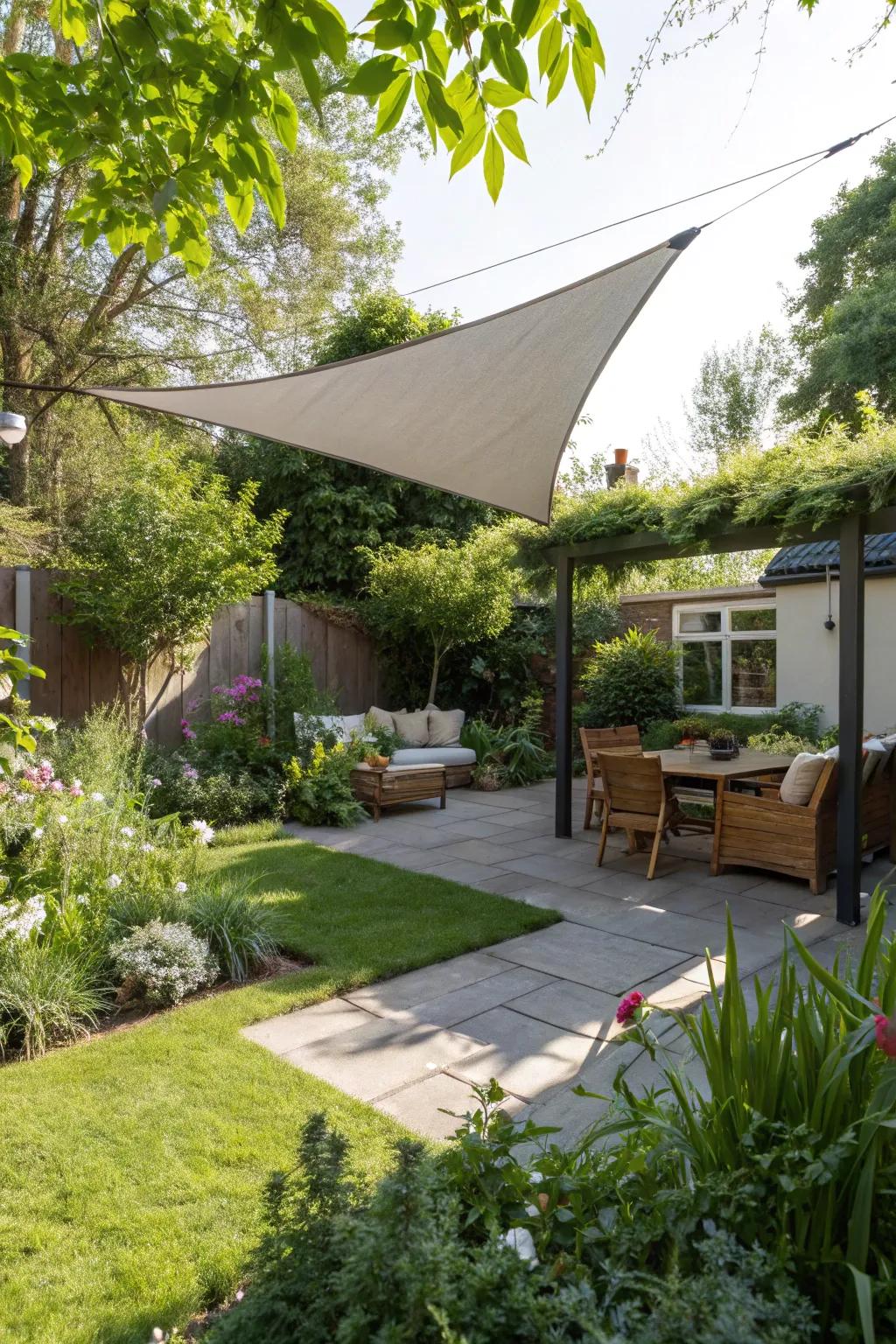
Managing sunlight in a west-facing garden can be tricky, but using sun sails or pergolas helps create pleasant shade where needed.
You might like:
- Shade Sail: Install a shade sail to provide effective and elegant shade in your garden area.
- Pergola Kit: Build a pergola to create a stylish, shaded retreat in your west-facing garden.
- Outdoor Curtain Panels: Add outdoor curtains to your pergola for adjustable shade and increased privacy.
7. Mixed Planting Heights
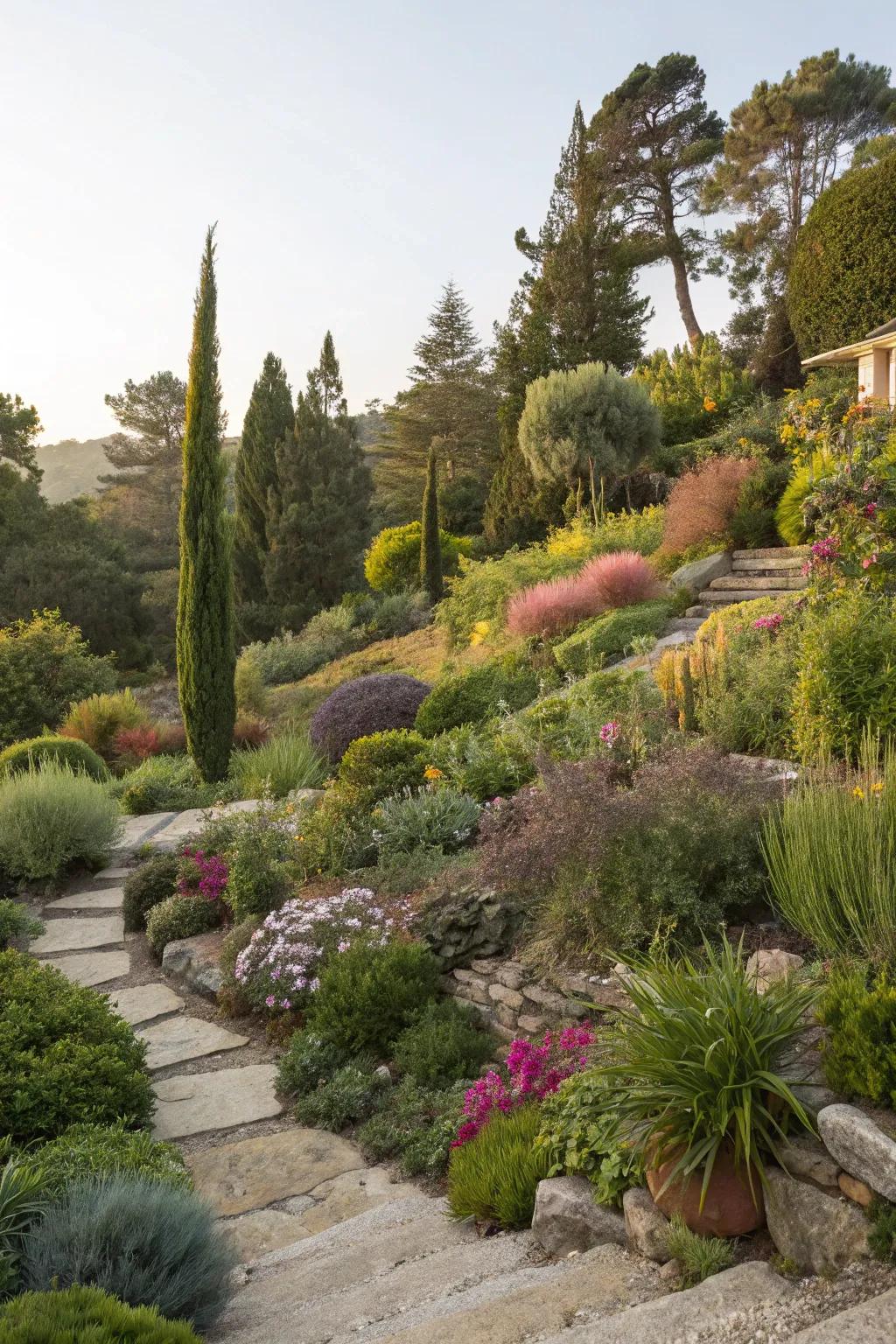
Playing with mixed planting heights adds dimension and intrigue to the garden. I love using a combination of trees, shrubs, and flowers.
A few choices to try:
- Garden Arbor with Climbing Plants: Enhance vertical dimension in your garden with a charming arbor for climbing plants.
- Assorted Shrub Collection: Create layered height variety with a selection of beautiful, easy-to-grow shrubs.
- Decorative Garden Planters: Add dynamic height variations with decorative planters for versatile flower arrangements.
8. Herb and Vegetable Garden
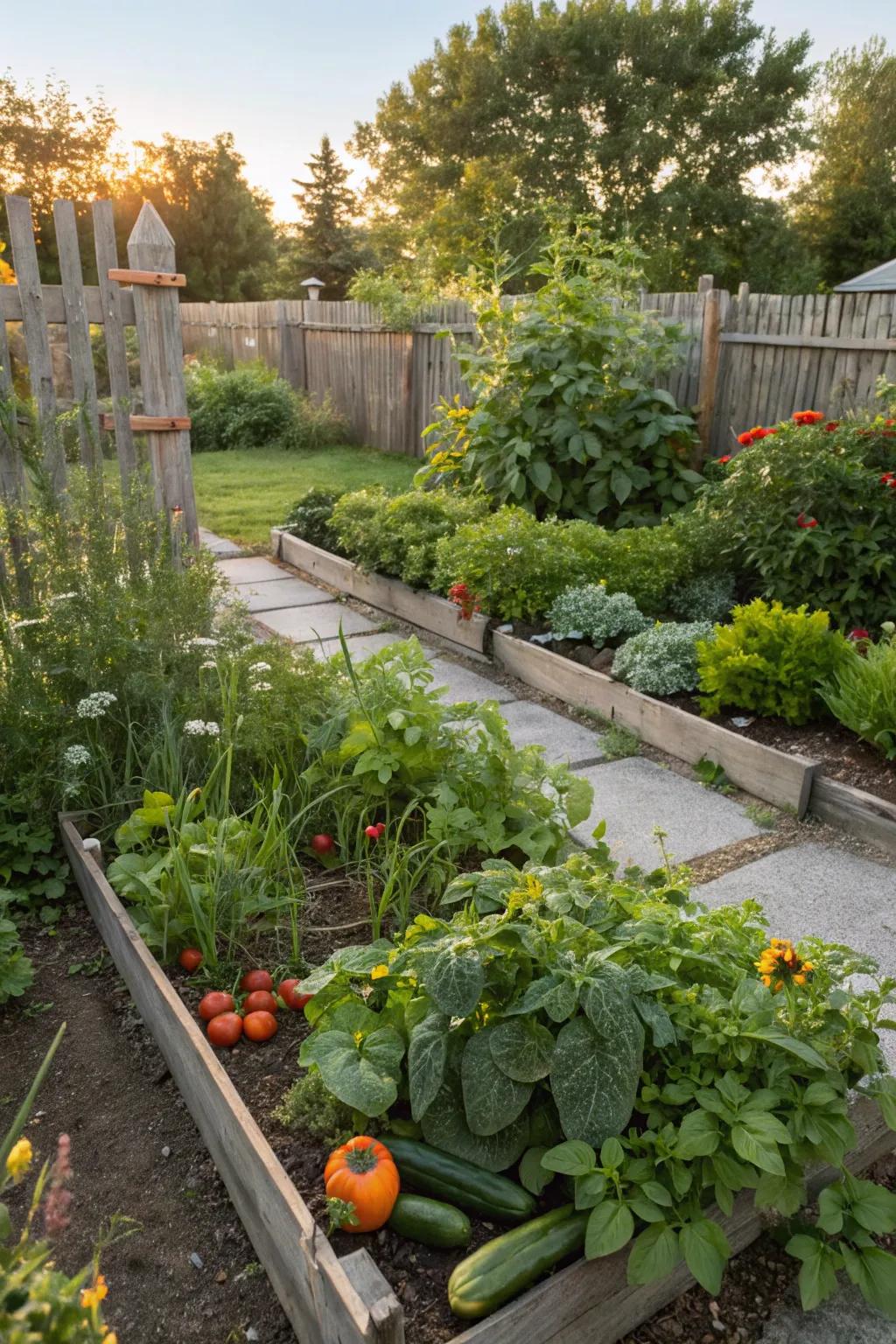
Dedicating a corner for an herb and vegetable garden has been rewarding. Fresh produce right from the garden is a delight.
Give these a look:
- Raised Garden Bed Kit: Elevate your planting with a sturdy raised bed kit for easy access and better drainage.
- Herb Planter with Drainage Holes: Optimize herb growth with a planter designed for efficient drainage and root health.
- Organic Vegetable Seed Pack: Kickstart your garden with a diverse pack of organic seeds for fresh, homegrown produce.
9. Seasonal Blooms

Planting for seasonal blooms ensures there’s always something flowering in my garden, keeping it lively all year round.
A few things you might like:
- Perennial Flower Seeds Mix: Plant a perennial flower seeds mix to enjoy blooms throughout the seasons in your garden.
- Flower Bulbs Assortment: Add a variety of flower bulbs to guarantee vibrant colors in every season.
- Gardening Tools Set: Equip yourself with a gardening tools set for easy and efficient planting year-round.
10. Cottage Garden Style
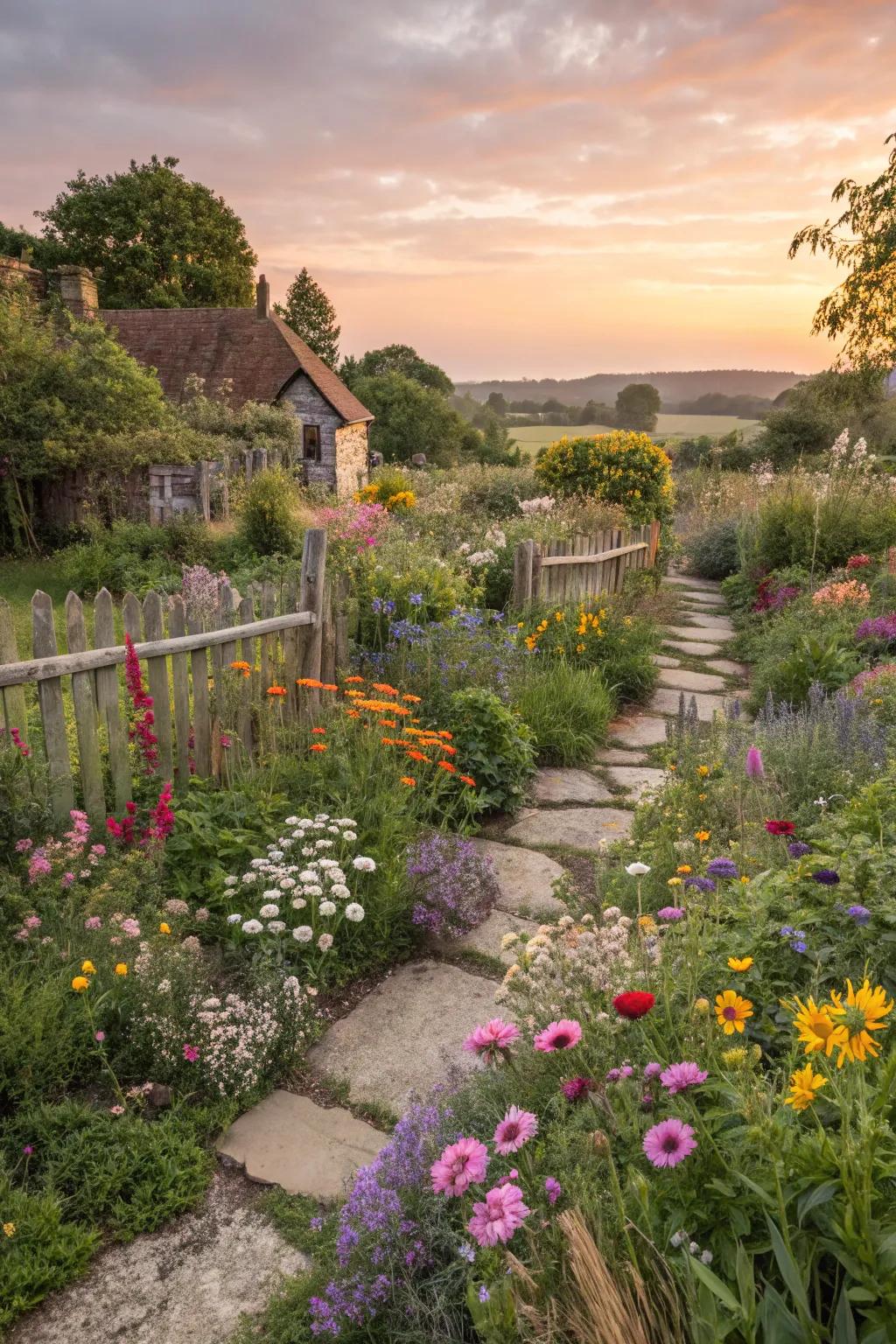
The cottage garden style with its informal, lush plantings brings a bit of wild beauty to my garden. It’s like a little piece of natural art.
Products that could assist:
- Wildflower Seed Mix: Create a vibrant, colorful garden by sowing a mix of wildflower seeds. Perfect for cottage charm.
- Wooden Garden Fence Panels: Enhance your cottage garden with rustic wooden fence panels for a classic, quaint look.
- Decorative Garden Path Stones: Design charming pathways in your garden using decorative stones to guide your outdoor strolls.
11. Water Features
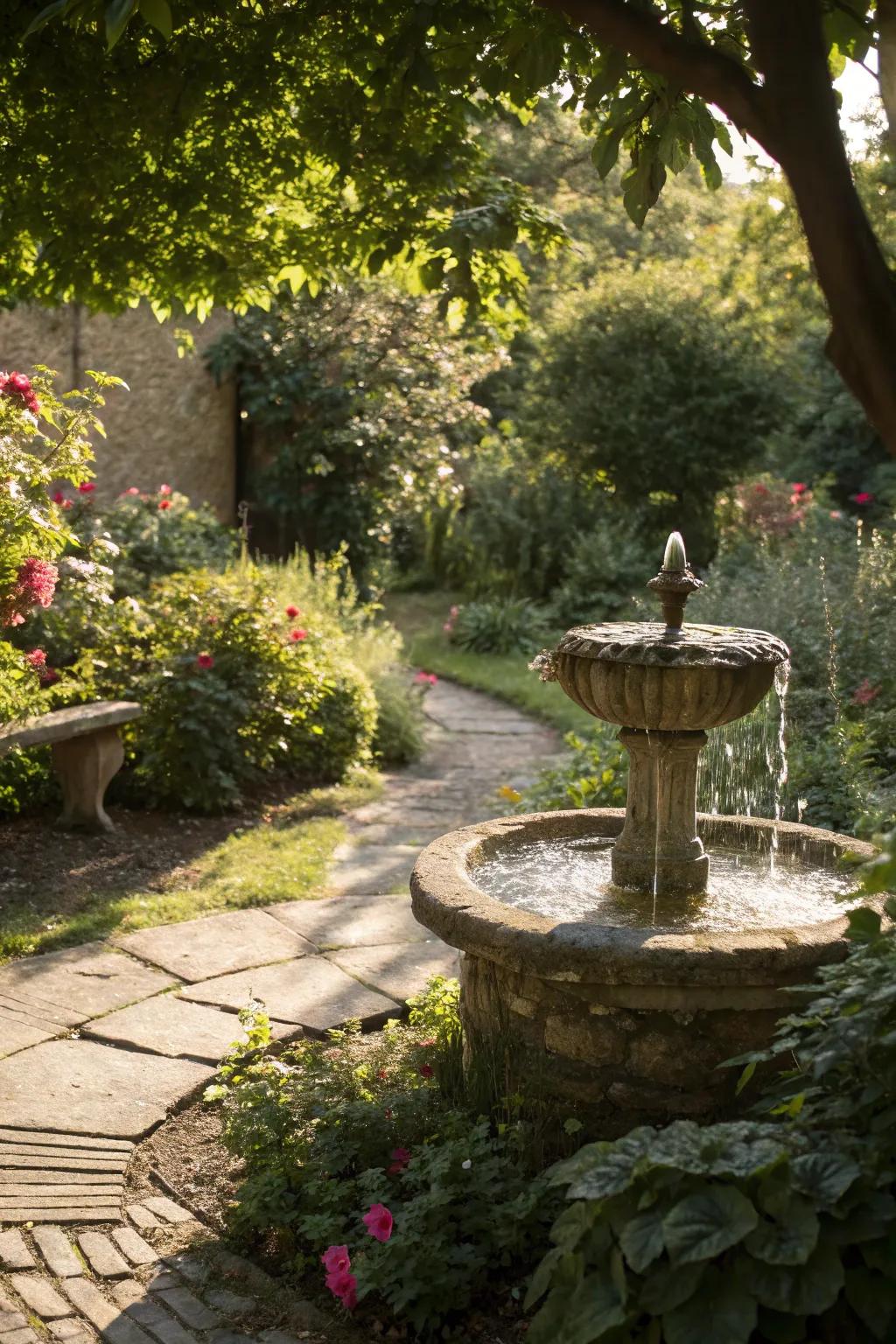
A small water feature can transform the atmosphere, turning my garden into a peaceful retreat with the soothing sound of water.
Check these products out:
- Solar-Powered Garden Fountain: Add a soothing touch to your garden with this eco-friendly, solar-powered fountain.
- Tiered Stone Water Fountain: Create a tranquil vibe with this elegantly designed tiered stone water feature.
- Compact Indoor/Outdoor Waterfall Feature: Enhance your garden’s serenity with this compact waterfall feature, perfect for small spaces.
12. Lawn Areas
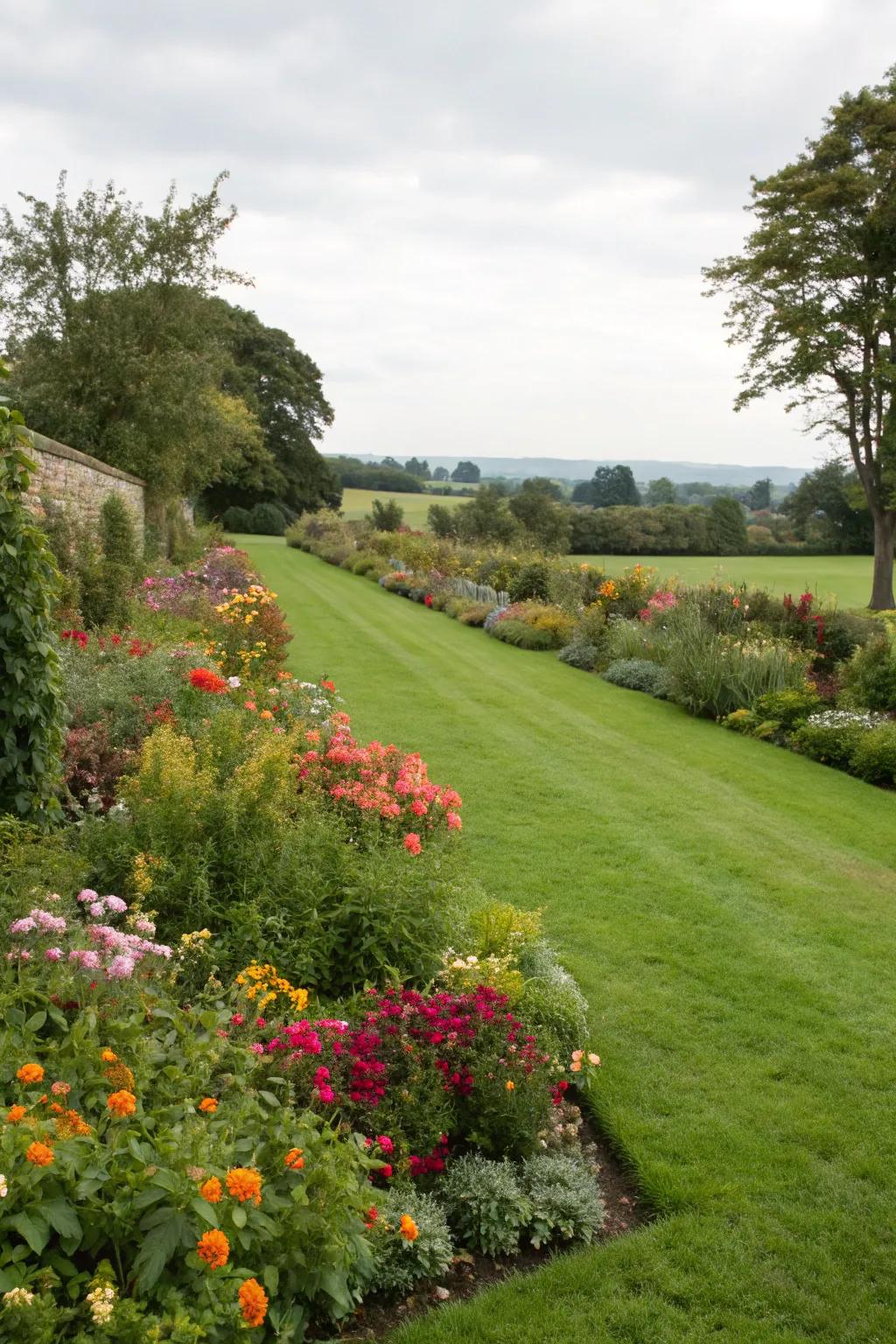
A well-maintained lawn area offers a perfect spot for relaxation and play. In my garden, I use a grass variety that thrives in both sun and shade.
You might give these a try:
- Sun and Shade Grass Seed Mix: Enhance your lawn with a versatile grass mix that thrives in diverse lighting conditions.
- Adjustable Garden Sprinkler System: Keep your lawn green with a customizable sprinkler system for even water distribution.
- Electric Lawn Mower: Easily maintain your lawn’s neat appearance with a high-efficiency electric lawn mower.
13. Outdoor Living Spaces
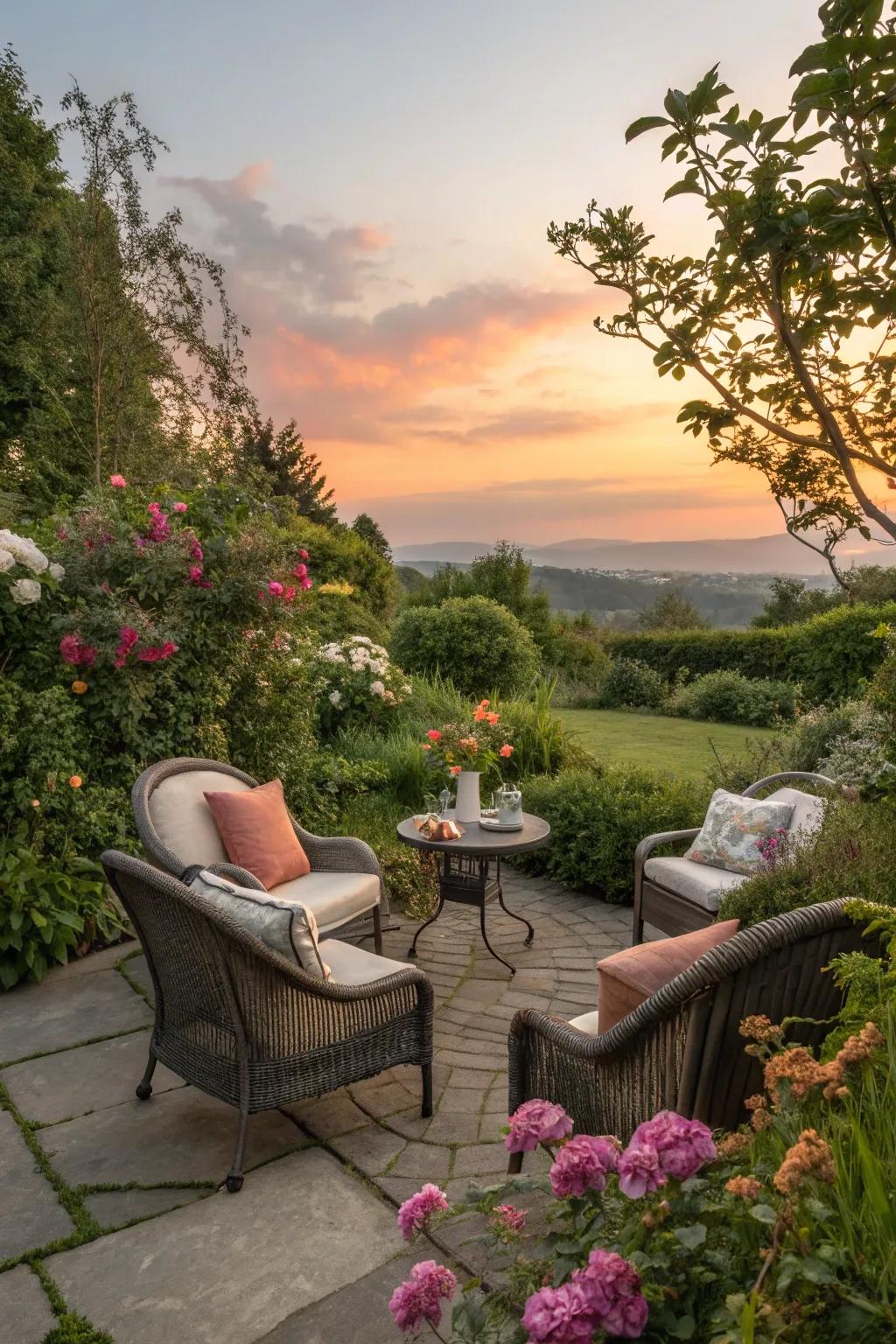
Incorporating outdoor living spaces like a patio or a seating area has made my garden an extension of my home. It’s the perfect spot for afternoon tea.
Might be a good match:
- Wicker Patio Furniture Set: Enhance your garden with this stylish wicker set, perfect for relaxing outdoors with comfort.
- Outdoor Bistro Table: Enjoy morning coffee or afternoon tea on this elegant outdoor bistro table, adding charm.
- Waterproof Outdoor Cushions: Add color and comfort with durable cushions designed for outdoor seating areas, weather-resistant.
14. Eco-Friendly Practices
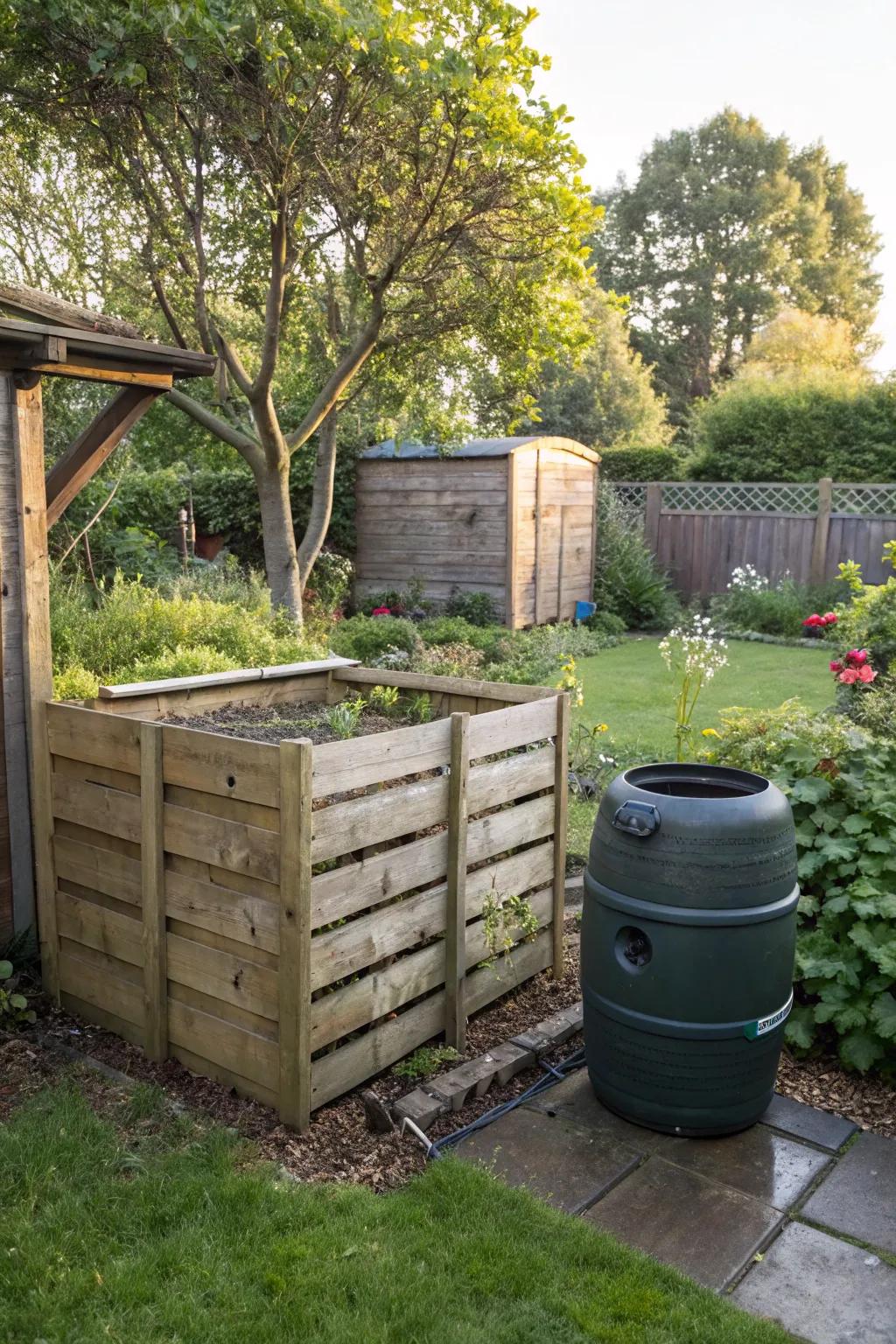
Incorporating eco-friendly practices like composting and rainwater harvesting has made my garden sustainable and thriving.
Items that may come in handy:
- Compost Bin: Transform kitchen scraps into nutrient-rich compost to enrich your garden and reduce waste.
- Rainwater Harvesting Barrel: Collect rainwater effortlessly to water your plants while saving on water bills.
- Solar Garden Lights: Illuminate your garden sustainably with solar lights, reducing energy use and enhancing ambiance.
15. Focal Points

Creating focal points with sculptures or unique plants draws the eye and adds interest. It’s like having a piece of art in the garden.
Some ideas to consider:
- Elegant Garden Statue: Enhance your garden with this elegant statue. Capture attention with its timeless charm.
- Unique Outdoor Sculpture: Add a striking outdoor sculpture to your garden and draw the eye instantly.
- Decorative Plant Display Stand: Elevate your garden with a decorative plant stand. Showcase your favorite greenery effortlessly.
